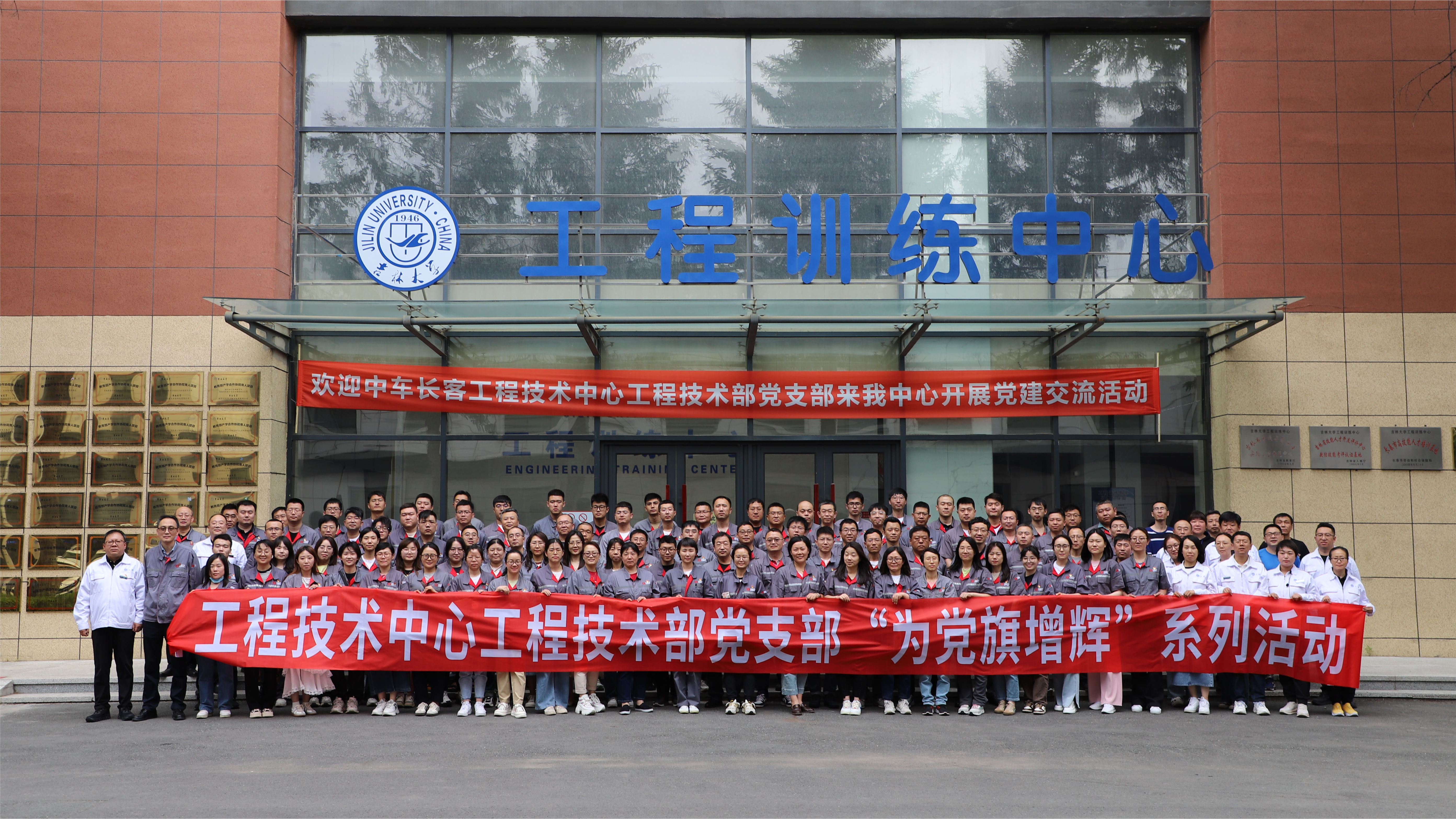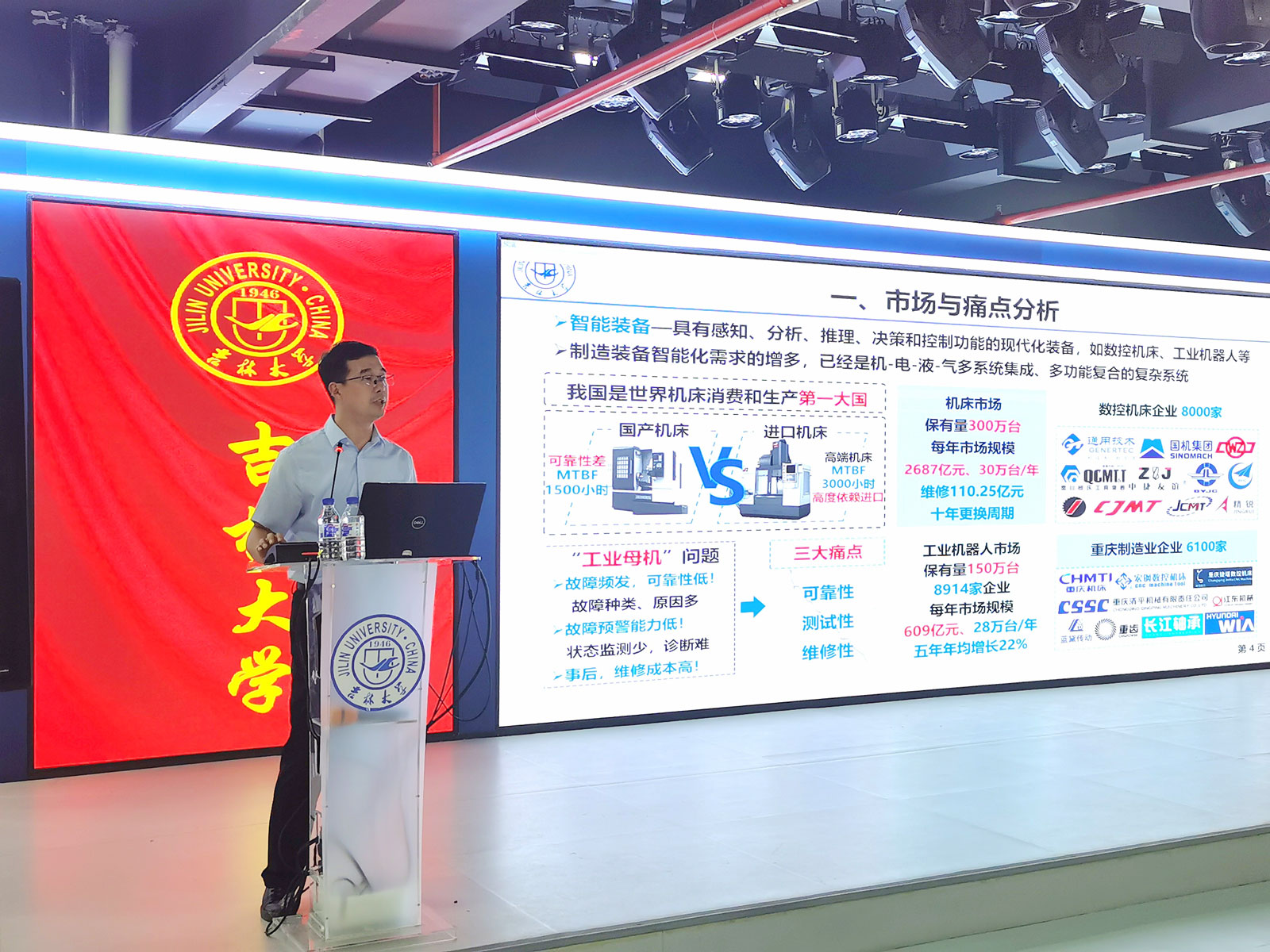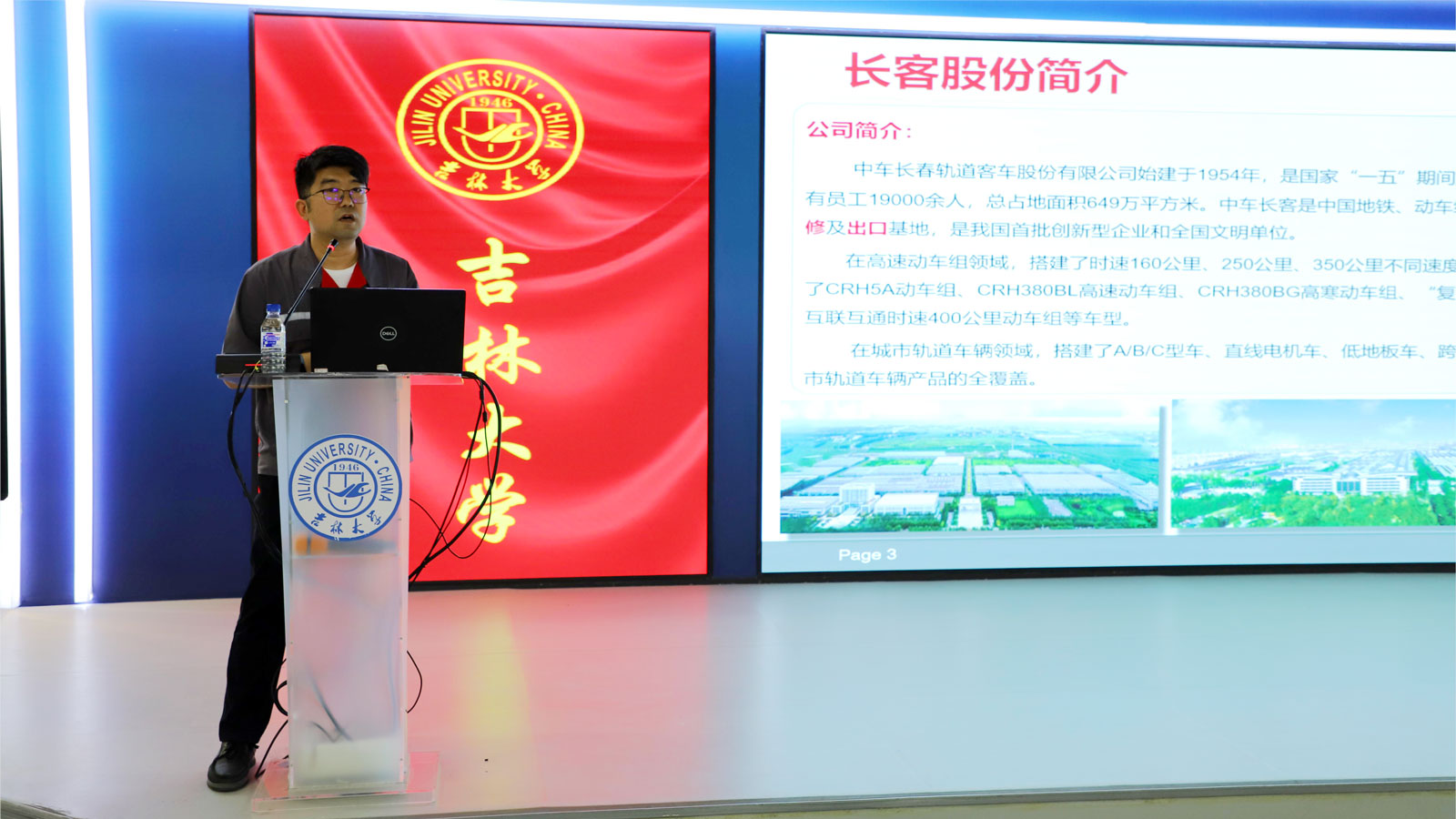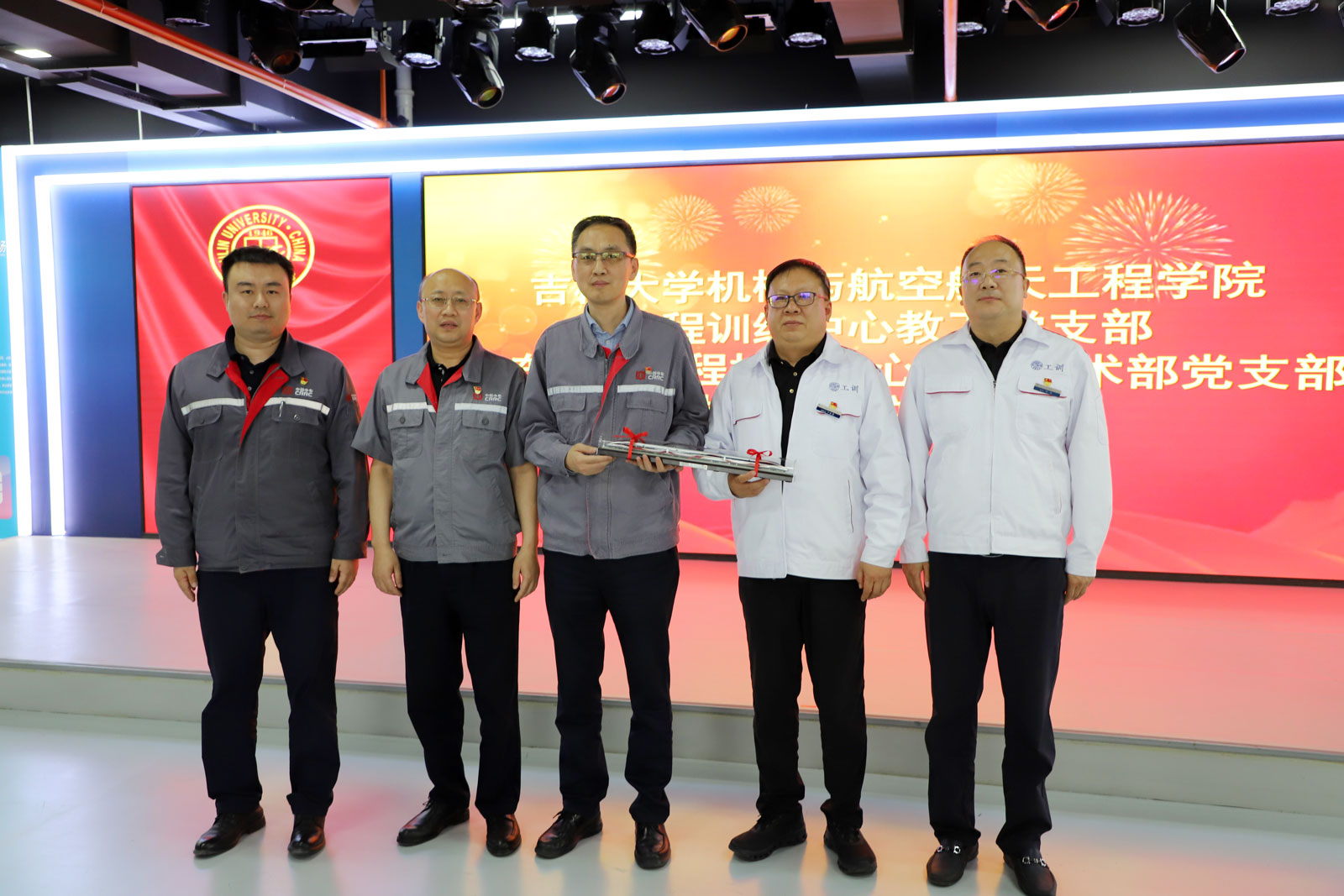On June 5, 2024, Deng Gang, Deputy Director of CRRC Changke Engineering Technology Center and Minister of Engineering Technology Department and Party Branch Secretary, led all Party members of the Party branch to Jilin University Engineering Training Center to participate in Party building exchange activities. Ding Liantao, Deputy Secretary of the Party Committee of the School of Mechanical and Aerospace Engineering, and Liu Peng, Vice Dean and Deputy Director of the Engineering Training Center, welcomed Deng Gang and his delegation and jointly participated in party building activities.

All party members of the Engineering Technology Department Party Branch of CRRC Changke Engineering Technology Center visited training rooms such as machining centers, intelligent manufacturing, laser processing, 3D printing, liquid metal, competitive robots, and multi line linkage teaching factories in sequence. During the visit, engineers from the technical department had in-depth business exchanges with teachers from the center.
After the visit, Professor He Jialong gave a report titled "Reliability, Testing, and Maintenance Technologies and Equipment for Intelligent Manufacturing Equipment", introducing the intelligence of equipment and related technologies. Senior expert Bao Hongyang from CRRC delivered a technical report titled "Advanced Manufacturing Technology and Enterprise Artificial Intelligence for Railway Passenger Car Bodies", introducing advanced manufacturing technology and innovative achievements in high-speed rail body manufacturing.


This party building cooperation not only strengthens the construction of party organizations on both sides, improves the cohesion and combat effectiveness of party organizations, but also provides strong organizational guarantees for the development of the cause of both sides. Through joint construction activities, both parties can achieve resource sharing and complementary advantages, jointly promote the close integration of industry, academia, and research, and facilitate the transformation and application of scientific and technological achievements.


